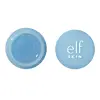What's inside
What's inside
 Key Ingredients
Key Ingredients

 Benefits
Benefits

 Concerns
Concerns

 Ingredients Side-by-side
Ingredients Side-by-side

Triisostearin
Skin ConditioningHydrogenated Polyisobutene
EmollientPolyglyceryl-10 Pentaisostearate
EmollientDextrin Palmitate
EmulsifyingEthylhexylglycerin
Skin ConditioningDiethylhexyl Syringylidenemalonate
Skin ProtectingSqualane
EmollientParfum
MaskingSimethicone
EmollientCaprylic/Capric Triglyceride
MaskingTocopherol
AntioxidantWater
Skin ConditioningRicinus Communis Seed Oil
MaskingGlycerin
HumectantSodium Hyaluronate
HumectantHydrogenated Castor Oil
Emollient1,2-Hexanediol
Skin ConditioningSoluble Collagen
HumectantLinalool
PerfumingGeraniol
PerfumingBenzyl Benzoate
AntimicrobialLimonene
PerfumingCI 77891
Cosmetic ColorantCI 42090
Cosmetic ColorantCI 45410
Cosmetic ColorantTriisostearin, Hydrogenated Polyisobutene, Polyglyceryl-10 Pentaisostearate, Dextrin Palmitate, Ethylhexylglycerin, Diethylhexyl Syringylidenemalonate, Squalane, Parfum, Simethicone, Caprylic/Capric Triglyceride, Tocopherol, Water, Ricinus Communis Seed Oil, Glycerin, Sodium Hyaluronate, Hydrogenated Castor Oil, 1,2-Hexanediol, Soluble Collagen, Linalool, Geraniol, Benzyl Benzoate, Limonene, CI 77891, CI 42090, CI 45410
Hydrogenated Polyisobutene
EmollientDiisostearyl Malate
EmollientCaprylic/Capric Triglyceride
MaskingEthylene/Propylene/Styrene Copolymer
Butylene/Ethylene/Styrene Copolymer
Limnanthes Alba Seed Oil
Skin ConditioningJojoba Esters
EmollientEthylhexyl Palmitate
EmollientTocopherol
AntioxidantHelianthus Annuus Seed Oil
EmollientButyrospermum Parkii Butter Extract
Skin ConditioningTetrahexyldecyl Ascorbate
AntioxidantPentaerythrityl Tetra-Di-T-Butyl Hydroxyhydrocinnamate
AntioxidantCitrus Aurantium Dulcis Peel Extract
Emulsion StabilisingCitrus Tangerina Peel Extract
AstringentTrihydroxystearin
Skin ConditioningSalicornia Herbacea Extract
Skin ConditioningCitrus Grandis Peel Extract
AstringentCitrus Junos Peel Extract
Skin ConditioningCitrus Clementina Fruit Extract
Skin ConditioningHedychium Spicatum Extract
Skin ConditioningVanilla Planifolia Fruit Extract
Skin ConditioningZingiber Officinale Root Extract
MaskingSodium Hyaluronate
HumectantGlucomannan
Skin ConditioningLimonene
PerfumingTitanium Dioxide
Cosmetic ColorantCI 77491
Cosmetic ColorantCI 77492
Cosmetic ColorantCI 77499
Cosmetic ColorantCI 15850
Cosmetic ColorantCI 19140
Cosmetic ColorantCI 73360
Cosmetic ColorantHydrogenated Polyisobutene, Diisostearyl Malate, Caprylic/Capric Triglyceride, Ethylene/Propylene/Styrene Copolymer, Butylene/Ethylene/Styrene Copolymer, Limnanthes Alba Seed Oil, Jojoba Esters, Ethylhexyl Palmitate, Tocopherol, Helianthus Annuus Seed Oil, Butyrospermum Parkii Butter Extract, Tetrahexyldecyl Ascorbate, Pentaerythrityl Tetra-Di-T-Butyl Hydroxyhydrocinnamate, Citrus Aurantium Dulcis Peel Extract, Citrus Tangerina Peel Extract, Trihydroxystearin, Salicornia Herbacea Extract, Citrus Grandis Peel Extract, Citrus Junos Peel Extract, Citrus Clementina Fruit Extract, Hedychium Spicatum Extract, Vanilla Planifolia Fruit Extract, Zingiber Officinale Root Extract, Sodium Hyaluronate, Glucomannan, Limonene, Titanium Dioxide, CI 77491, CI 77492, CI 77499, CI 15850, CI 19140, CI 73360
 Reviews
Reviews

Ingredients Explained
These ingredients are found in both products.
Ingredients higher up in an ingredient list are typically present in a larger amount.
This ingredient is an emollient, solvent, and texture enhancer. It is considered a skin-softener by helping the skin prevent moisture loss.
It helps thicken a product's formula and makes it easier to spread by dissolving clumping compounds.
Caprylic Triglyceride is made by combining glycerin with coconut oil, forming a clear liquid.
While there is an assumption Caprylic Triglyceride can clog pores due to it being derived from coconut oil, there is no research supporting this.
Learn more about Caprylic/Capric TriglycerideHydrogenated Polyisobutene is a synthetic polymer. Polymers are compounds with high molecular weight. Hydrogenated Polyisobutene is an emollient and texture enhancer.
In one study, Hydrogenated Polyisobutene showed better skin hydration levels than Caprylic/Capric Triglyceride. As an emollient, it helps keep your skin soft and hydrated by trapping moisture in.
Hydrogenated Polyisobutene is often used as a mineral oil replacement.
Learn more about Hydrogenated PolyisobuteneLimonene is a fragrance that adds scent and taste to a formulation.
It's found in the peel oil of citrus fruits and other plants such as lavender and eucalyptus. The scent of limonene is generally described as "sweet citrus".
Limonene acts as an antioxidant, meaning it helps neutralize free radicals.
When exposed to air, oxidized limonene may sensitize the skin. Because of this, limonene is often avoided by people with sensitive skin.
The term 'fragrance' is not regulated in many countries. In many cases, it is up to the brand to define this term. For instance, many brands choose to label themselves as "fragrance-free" because they are not using synthetic fragrances. However, their products may still contain ingredients such as essential oils that are considered a fragrance.
Learn more about LimoneneSodium Hyaluronate is hyaluronic acid's salt form. It is commonly derived from the sodium salt of hyaluronic acid.
Like hyaluronic acid, it is great at holding water and acts as a humectant. This makes it a great skin hydrating ingredient.
Sodium Hyaluronate is naturally occurring in our bodies and is mostly found in eye fluid and joints.
These are some other common types of Hyaluronic Acid:
Learn more about Sodium HyaluronateTocopherol (also known as Vitamin E) is a common antioxidant used to help protect the skin from free-radicals and strengthen the skin barrier. It's also fat soluble - this means our skin is great at absorbing it.
Vitamin E also helps keep your natural skin lipids healthy. Your lipid skin barrier naturally consists of lipids, ceramides, and fatty acids. Vitamin E offers extra protection for your skin’s lipid barrier, keeping your skin healthy and nourished.
Another benefit is a bit of UV protection. Vitamin E helps reduce the damage caused by UVB rays. (It should not replace your sunscreen). Combining it with Vitamin C can decrease sunburned cells and hyperpigmentation after UV exposure.
You might have noticed Vitamin E + C often paired together. This is because it is great at stabilizing Vitamin C. Using the two together helps increase the effectiveness of both ingredients.
There are often claims that Vitamin E can reduce/prevent scarring, but these claims haven't been confirmed by scientific research.
Learn more about Tocopherol